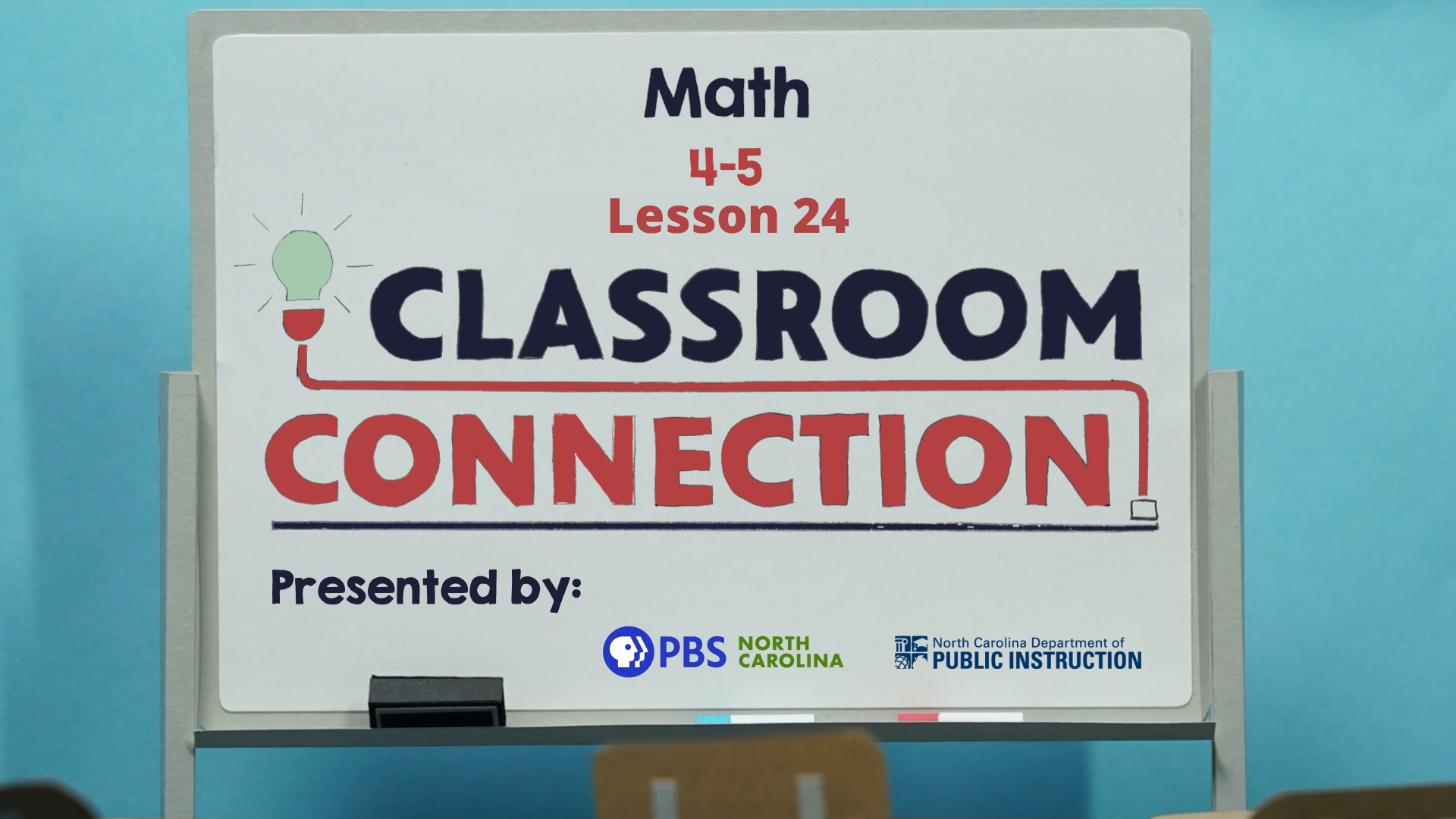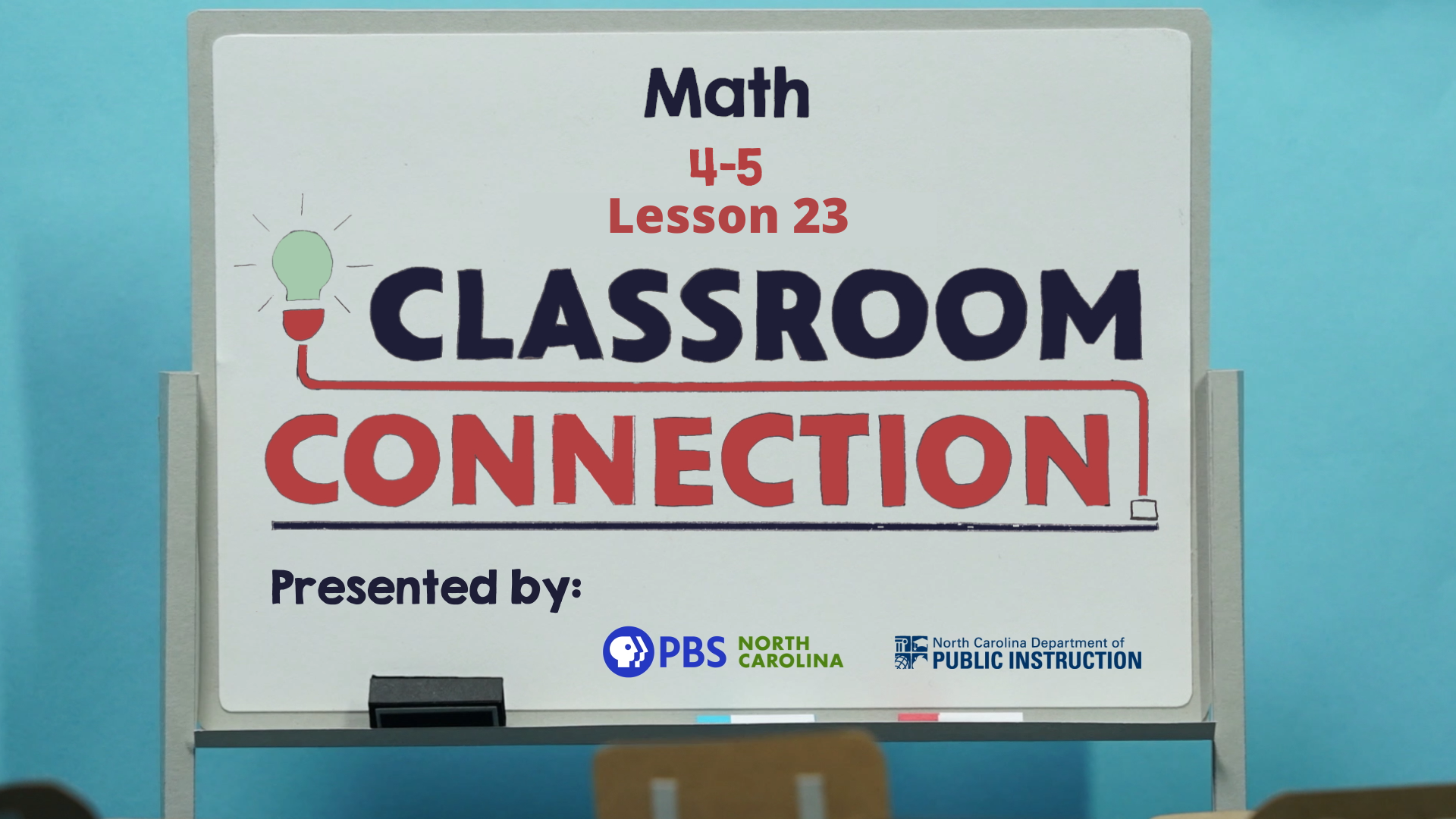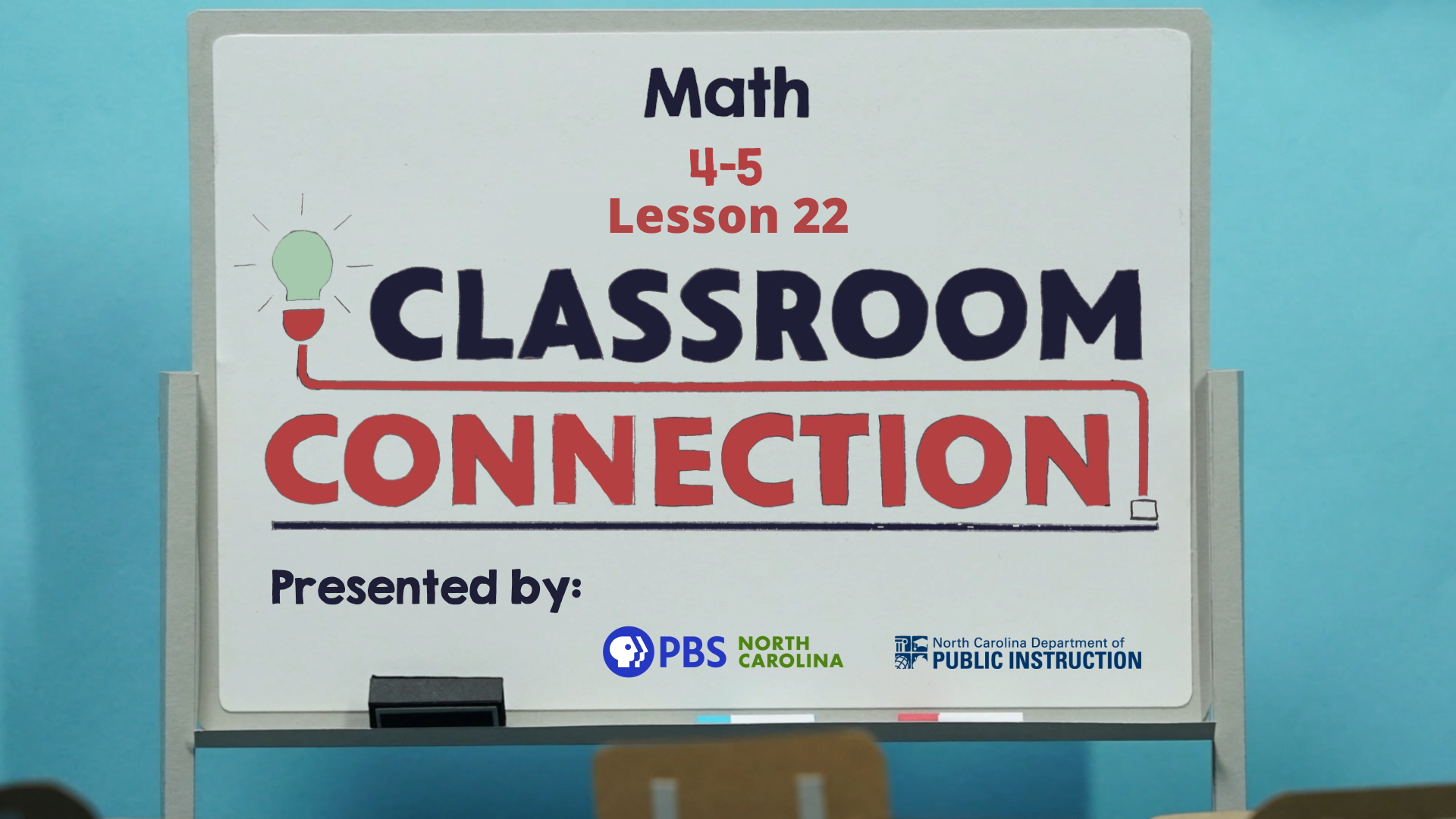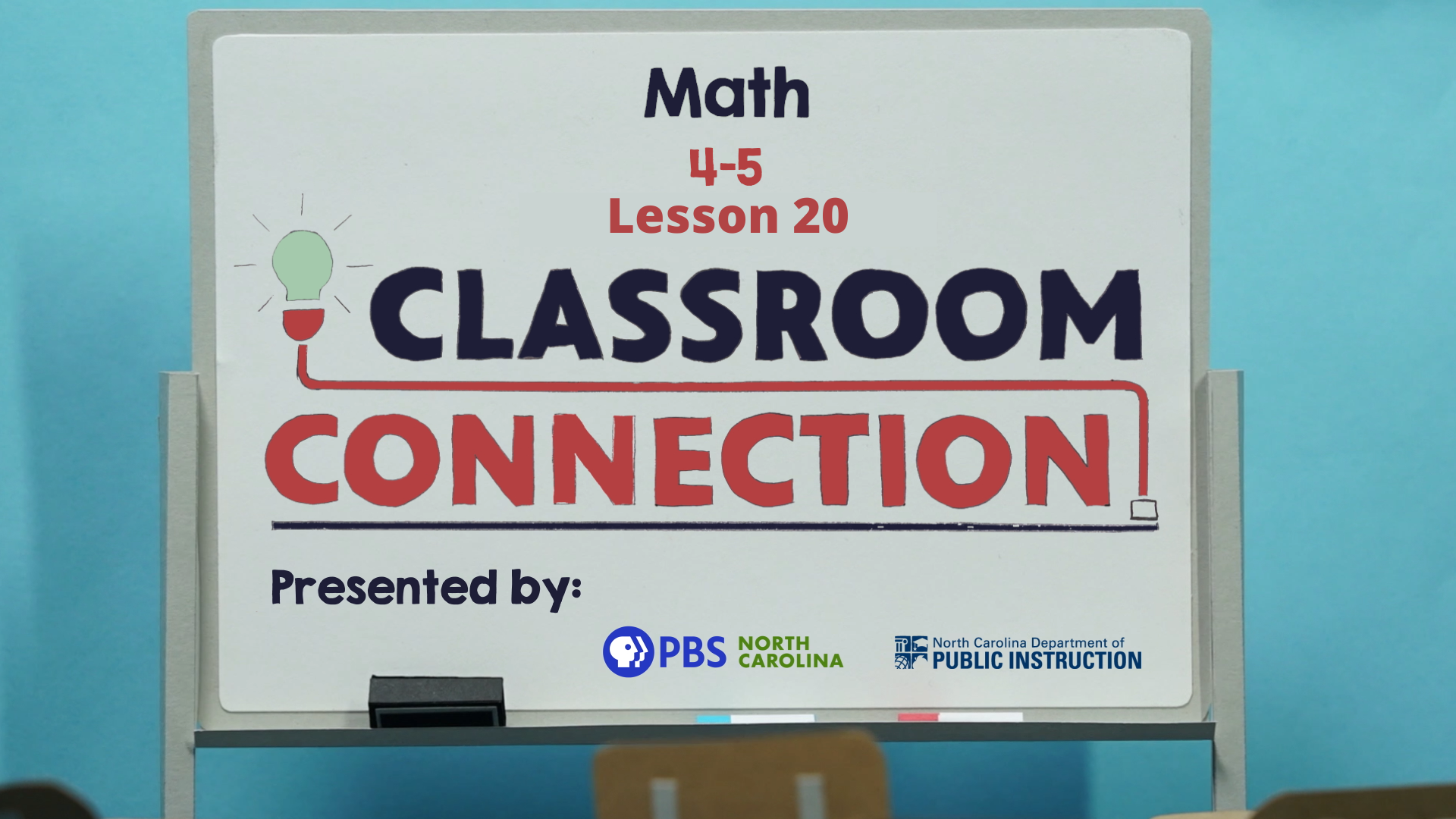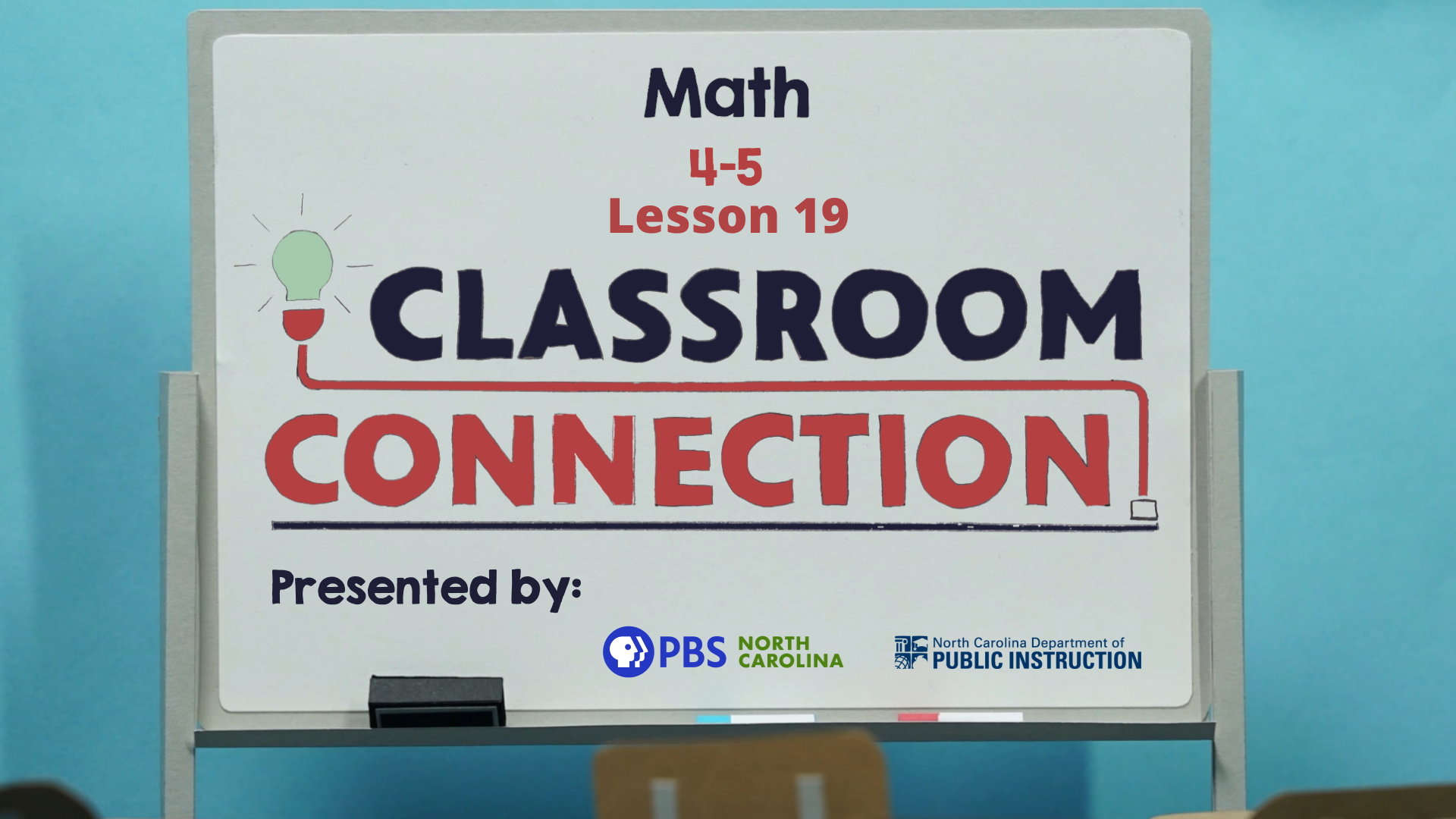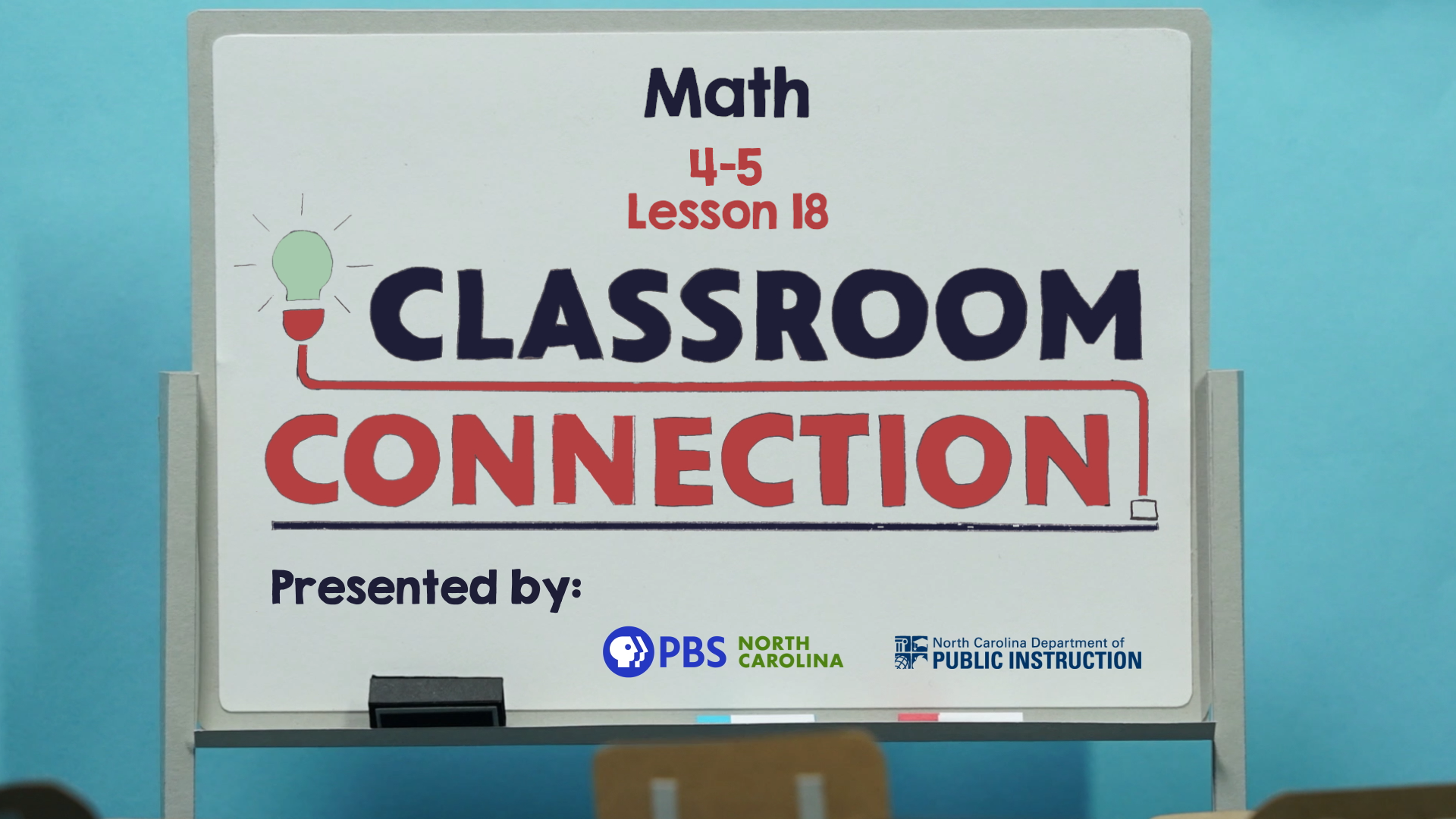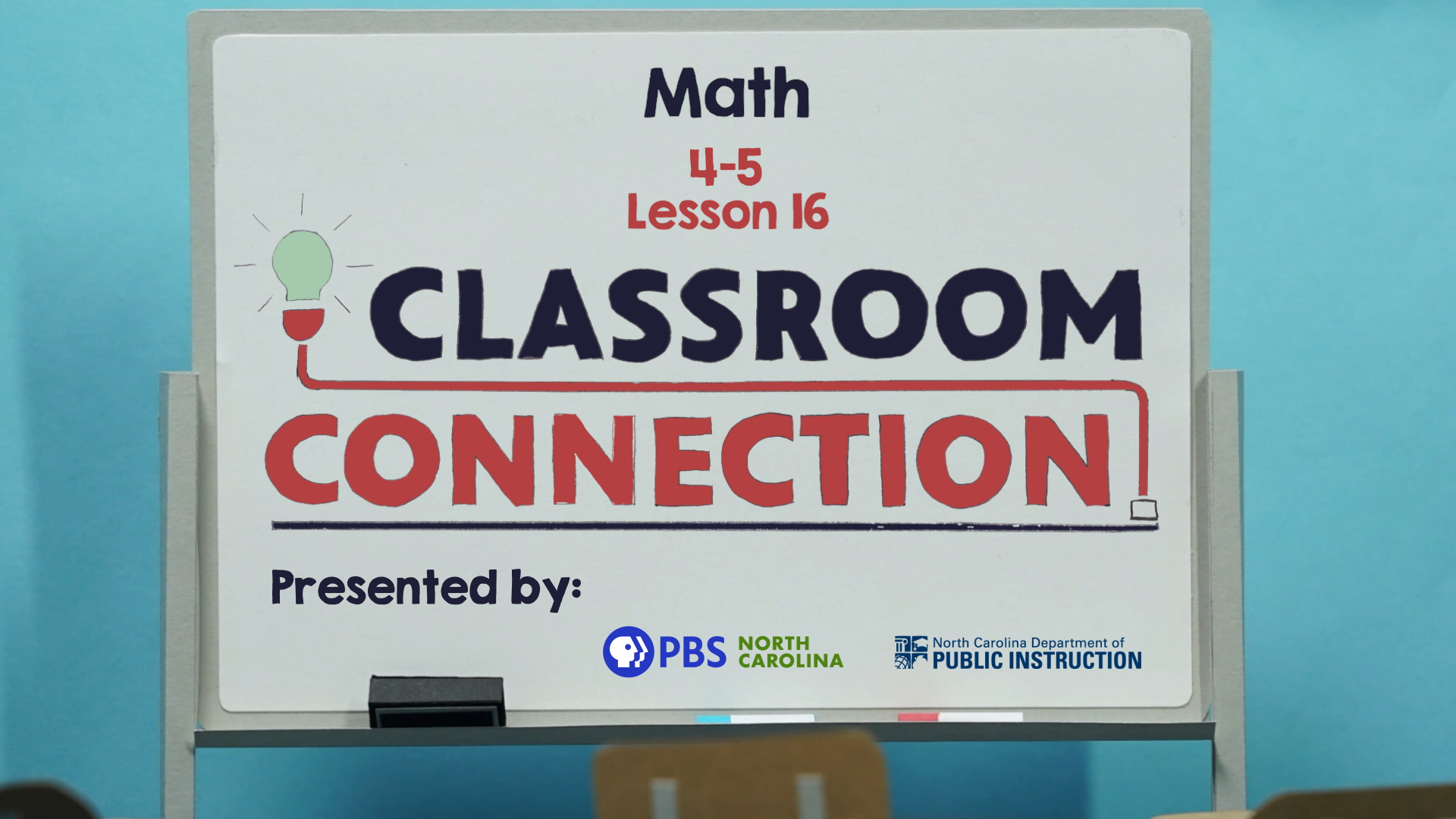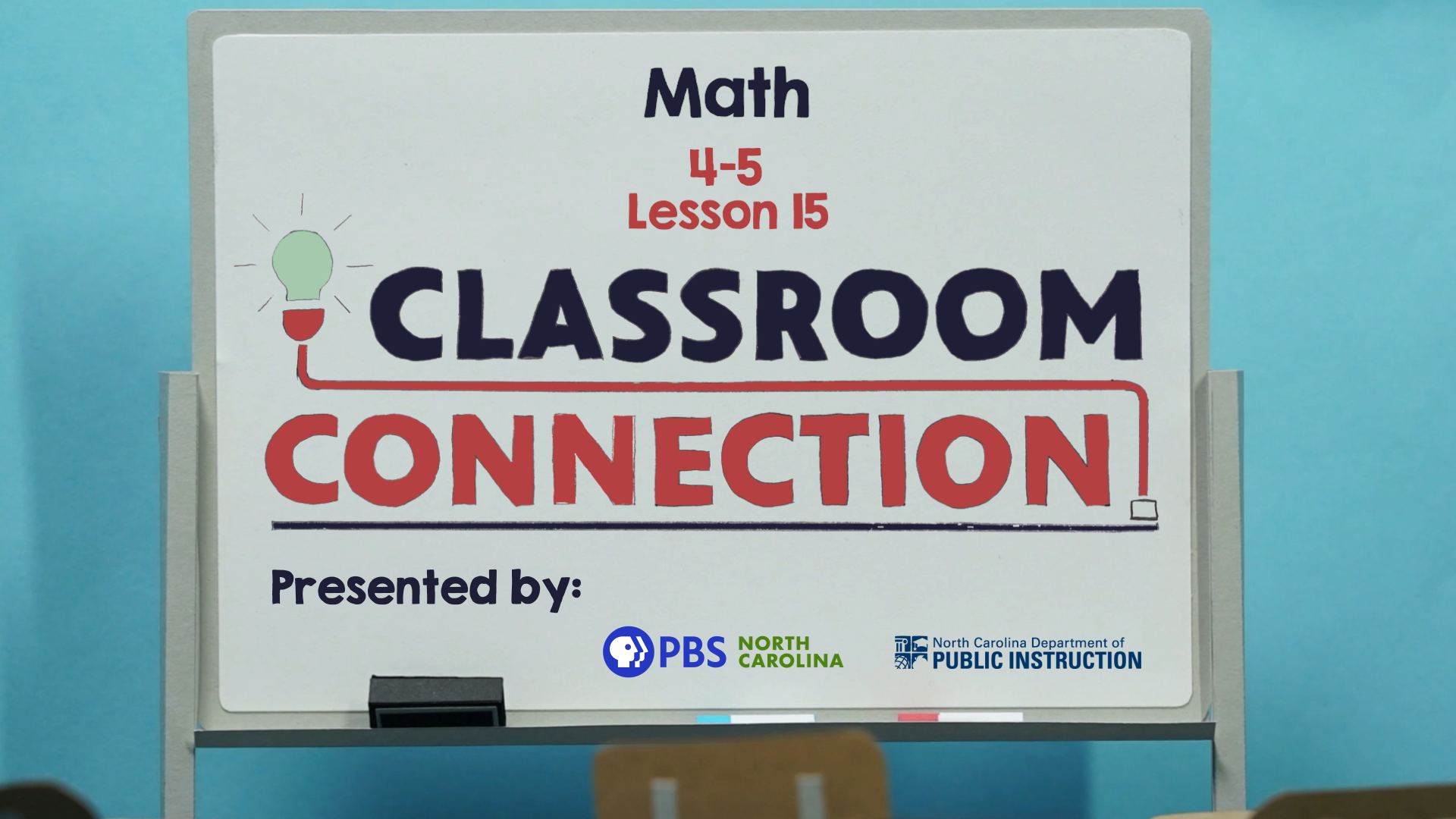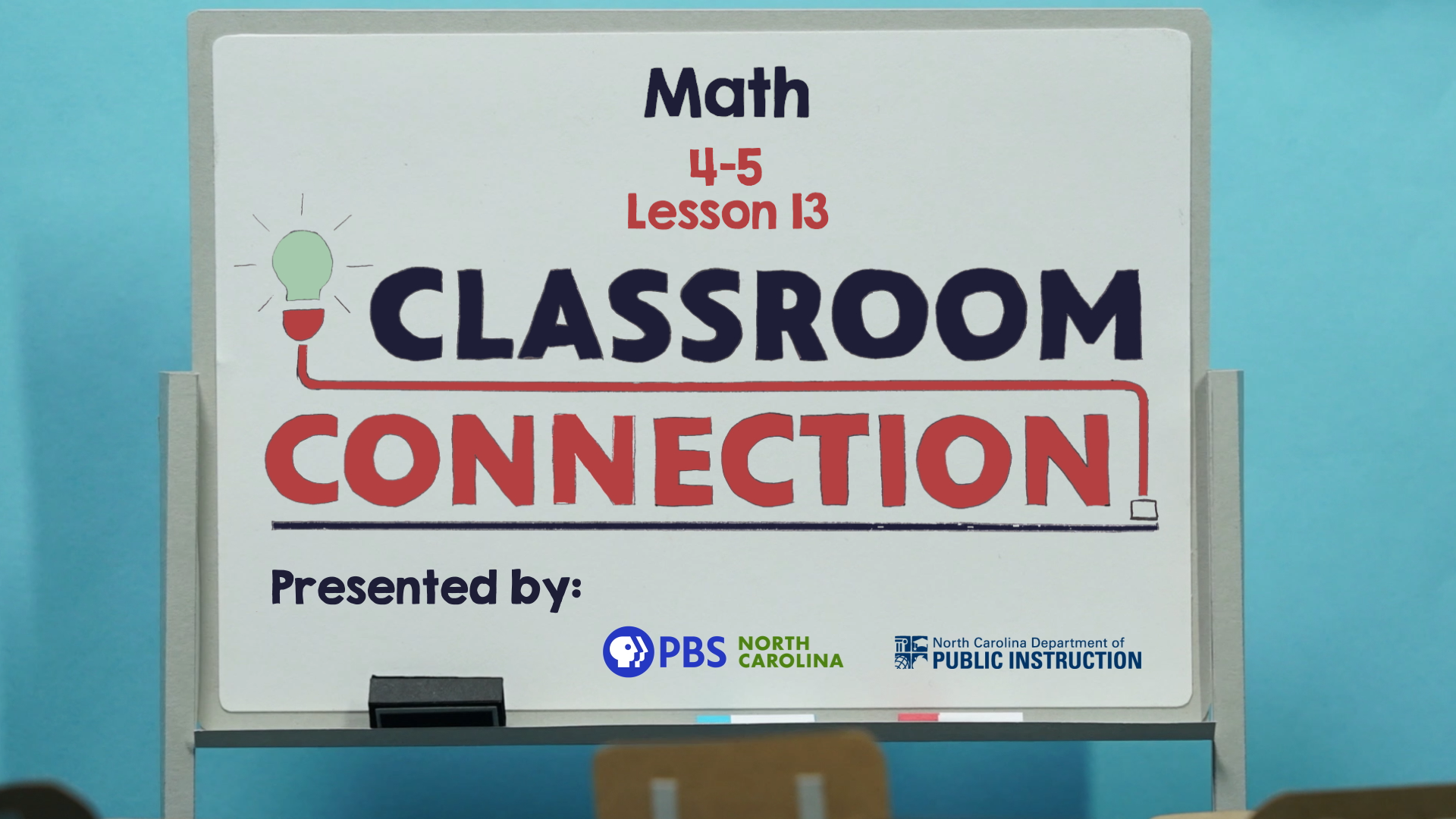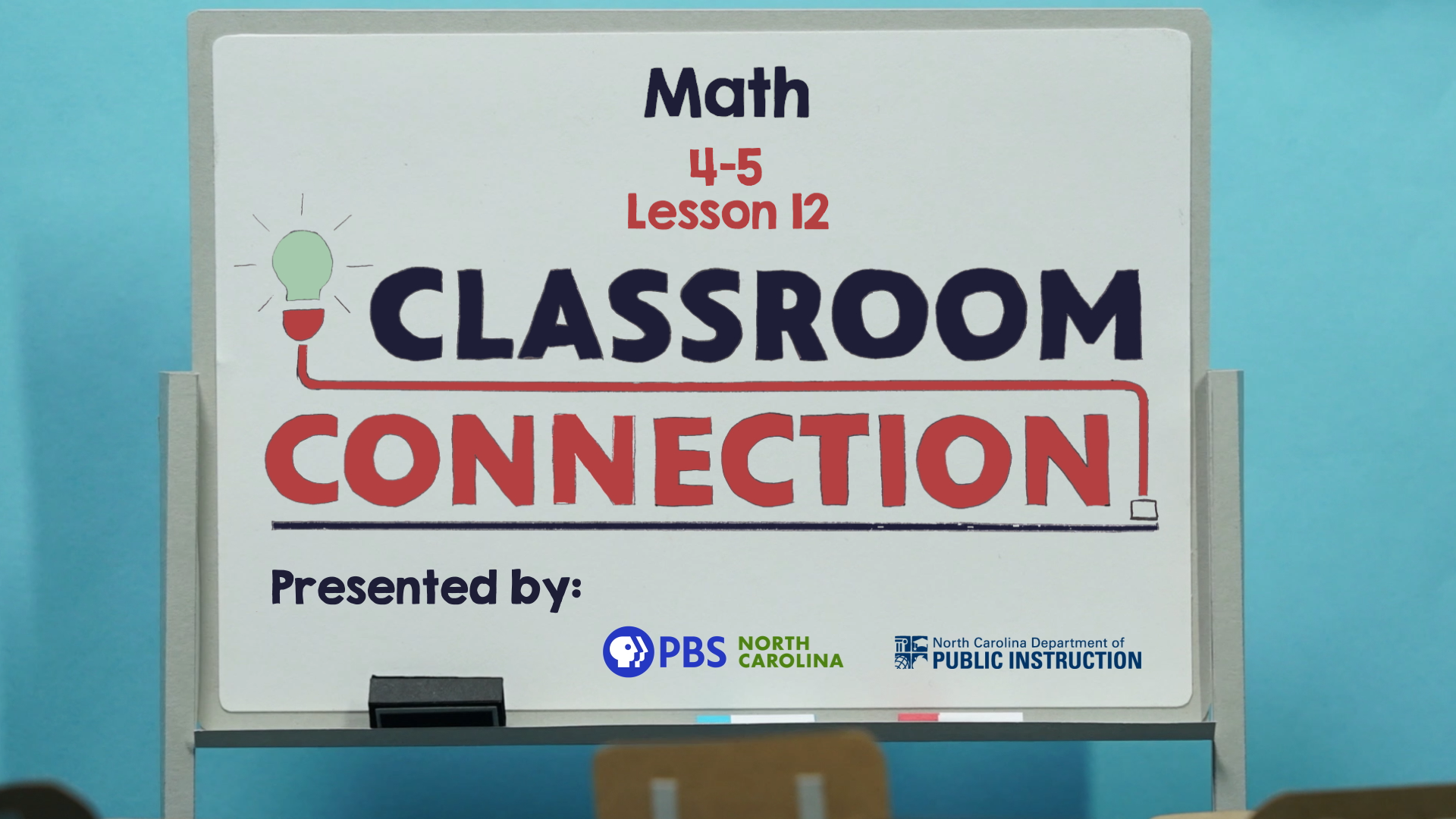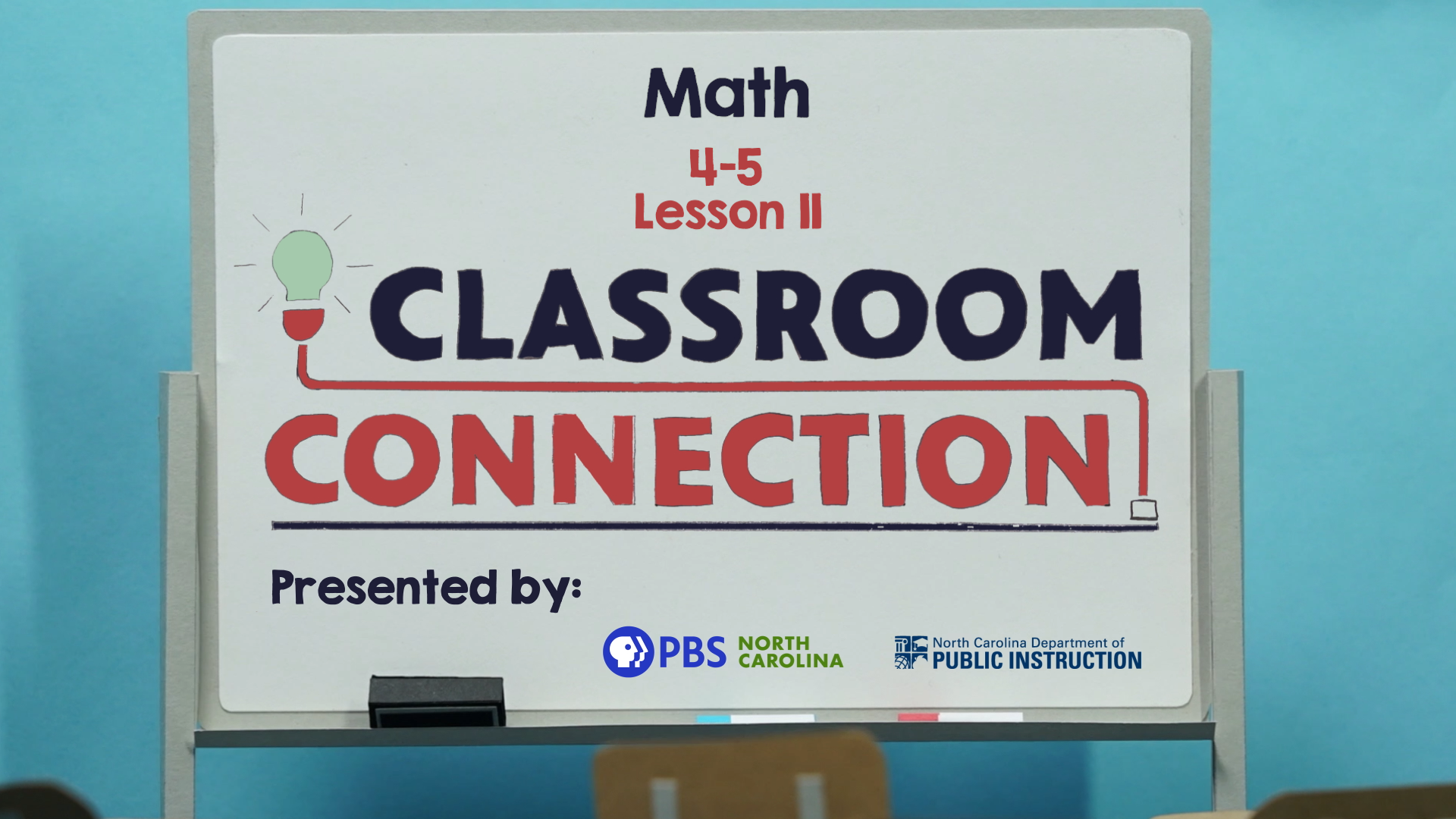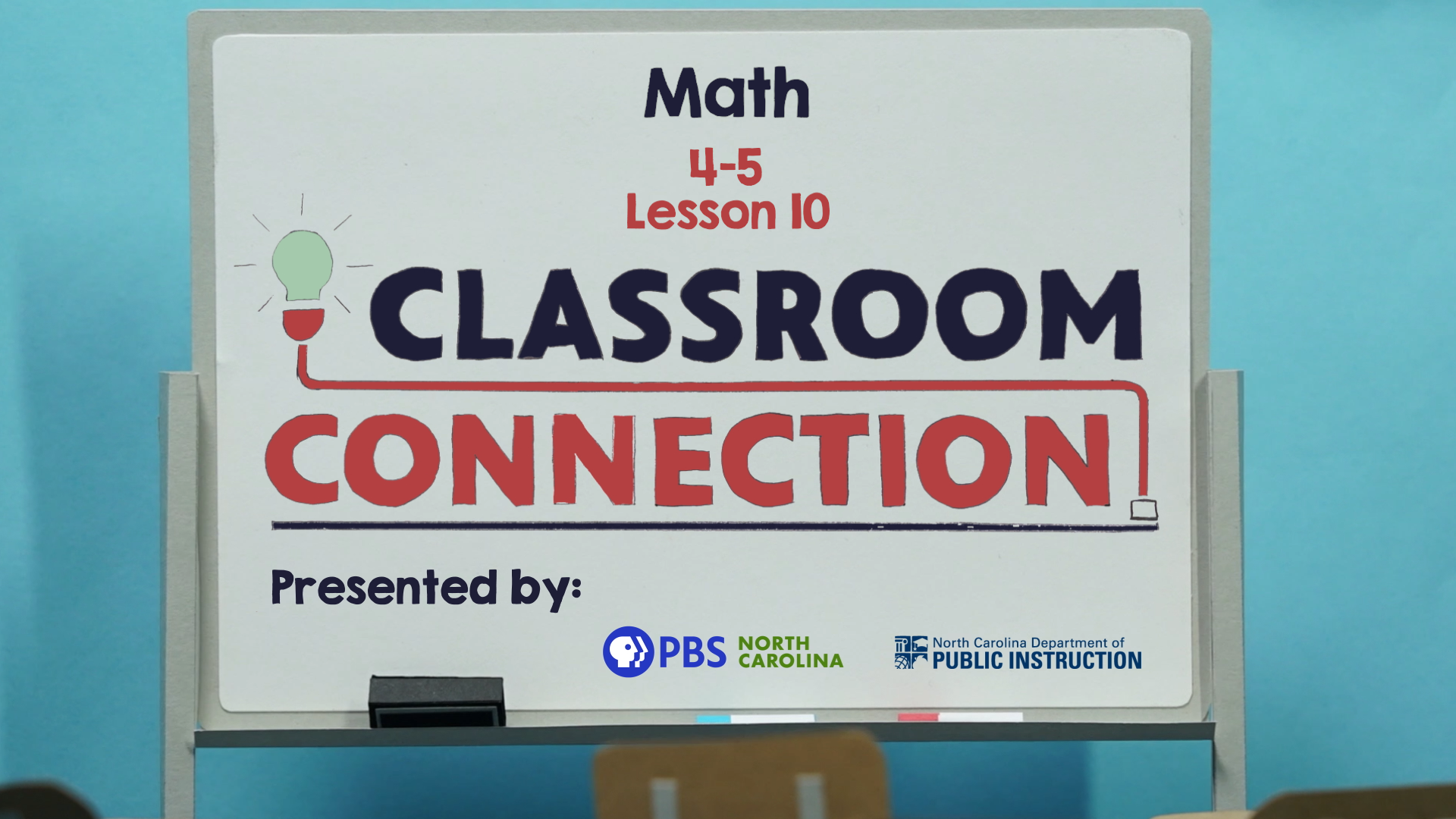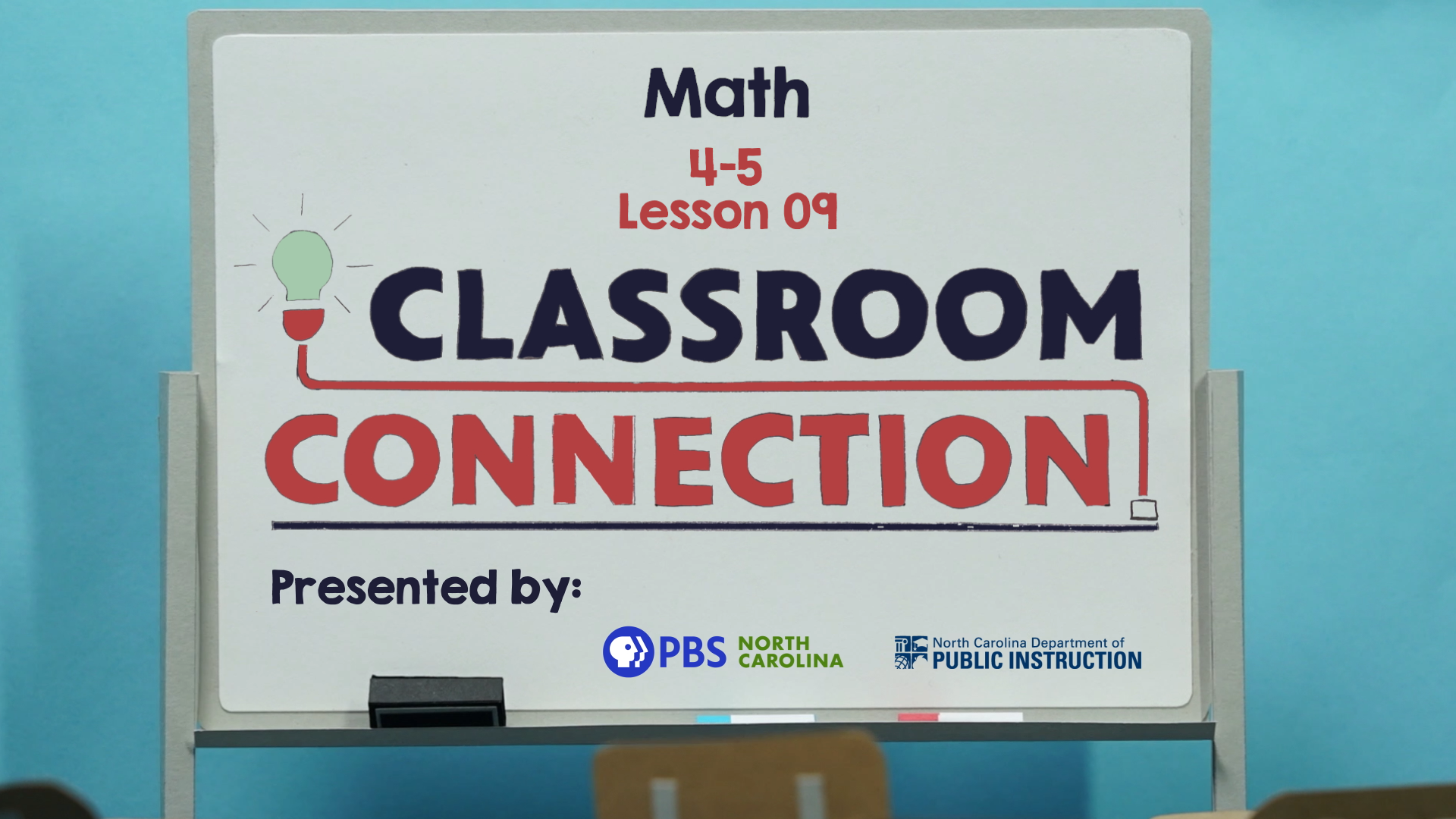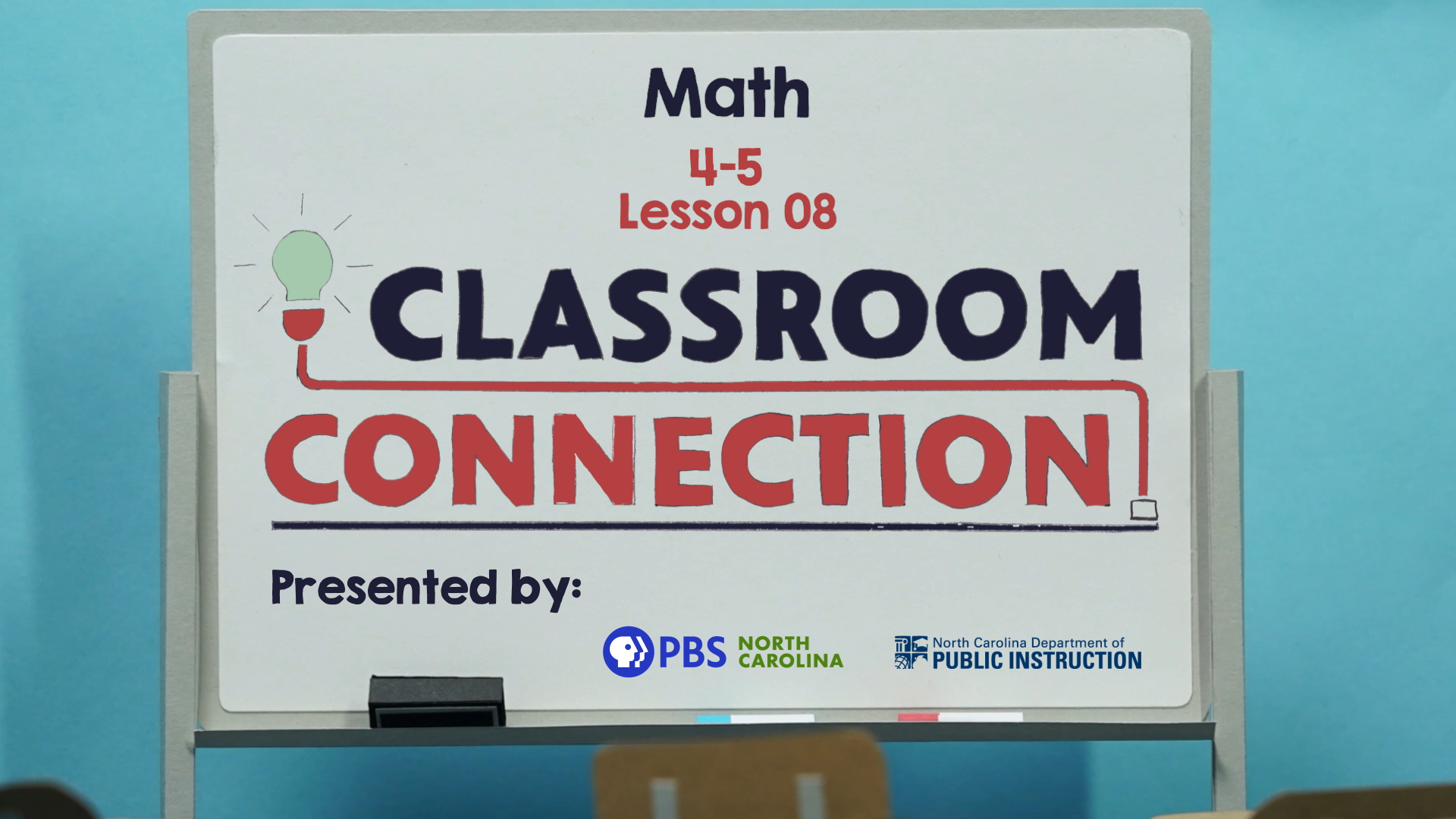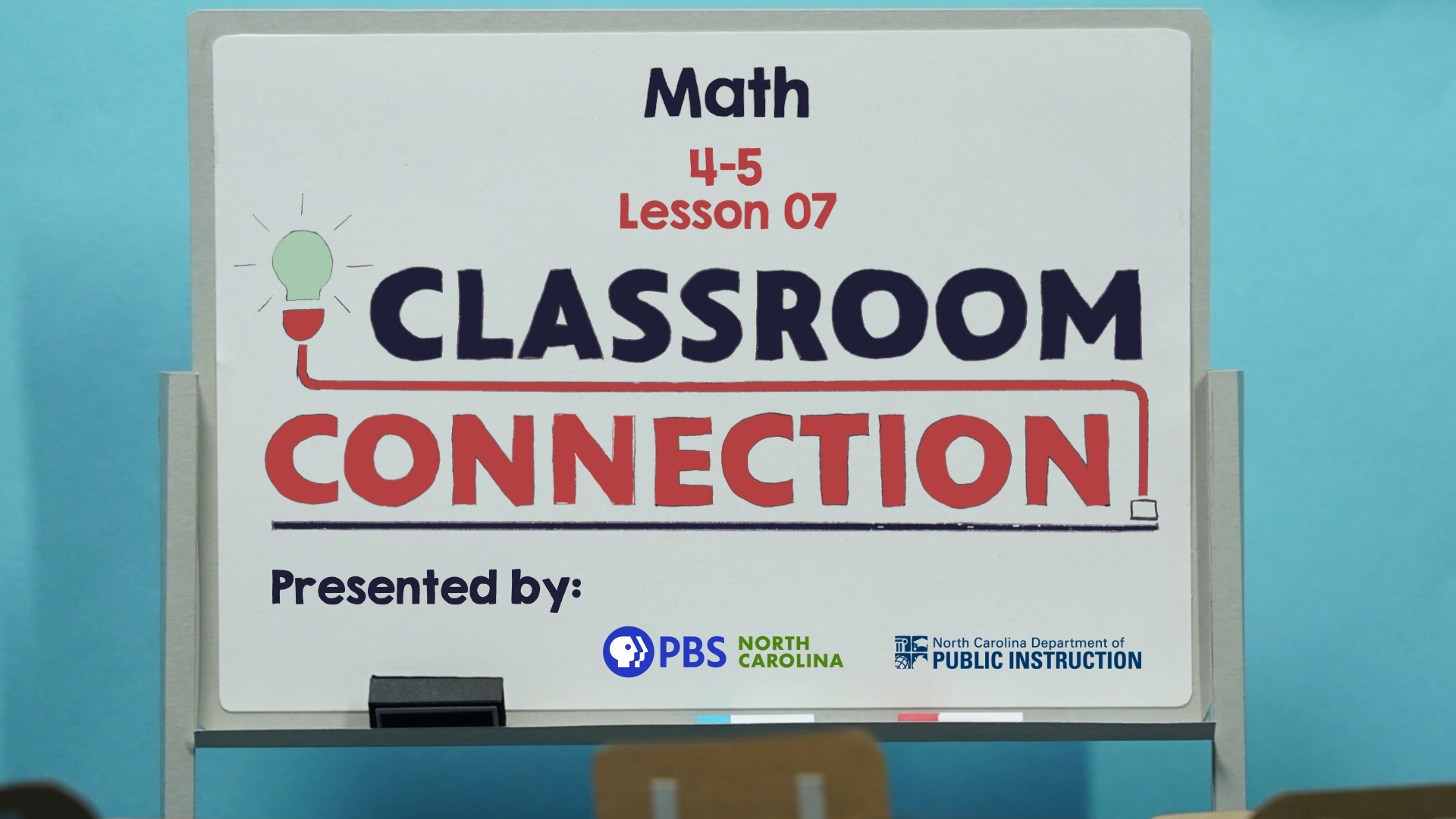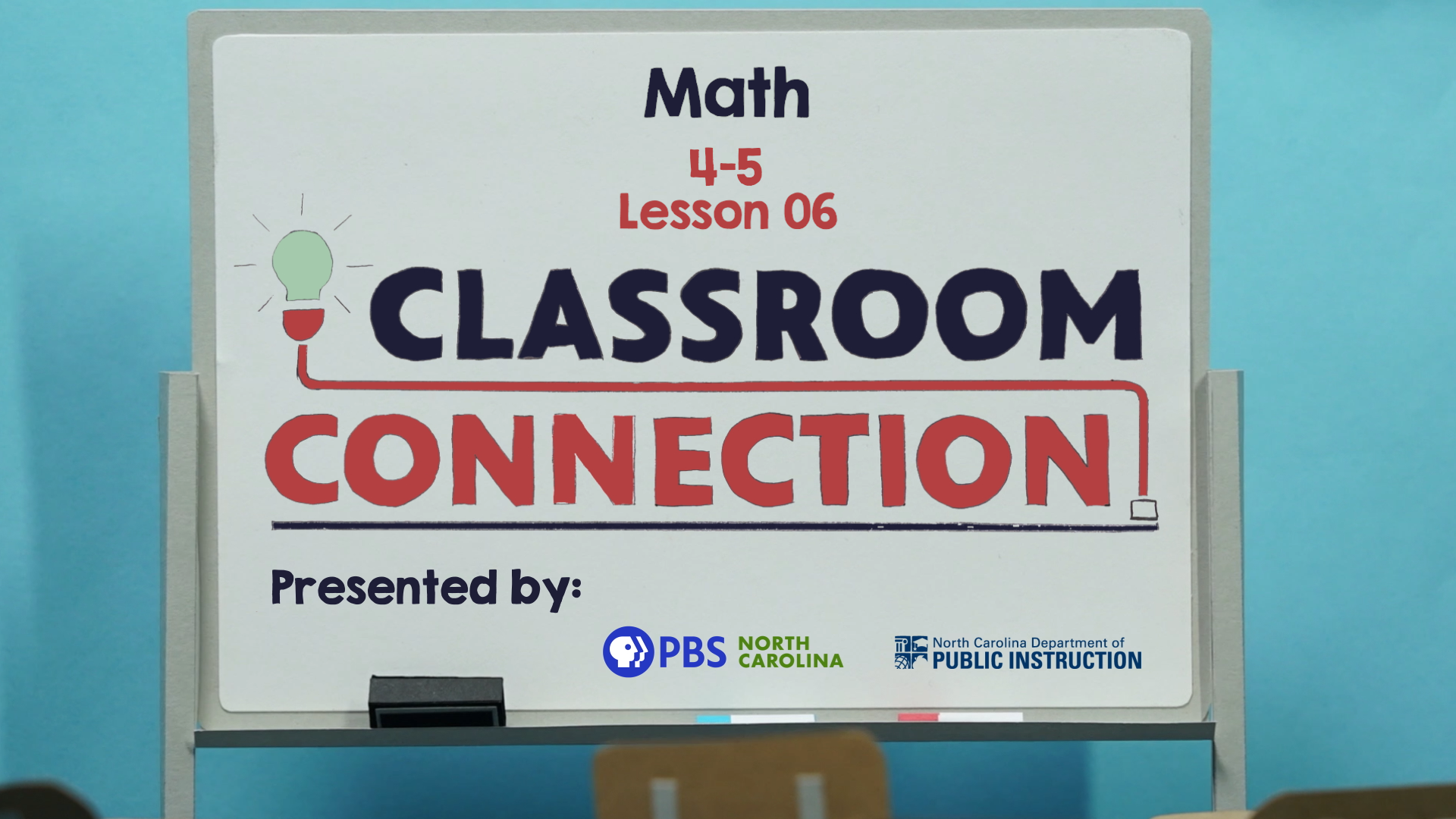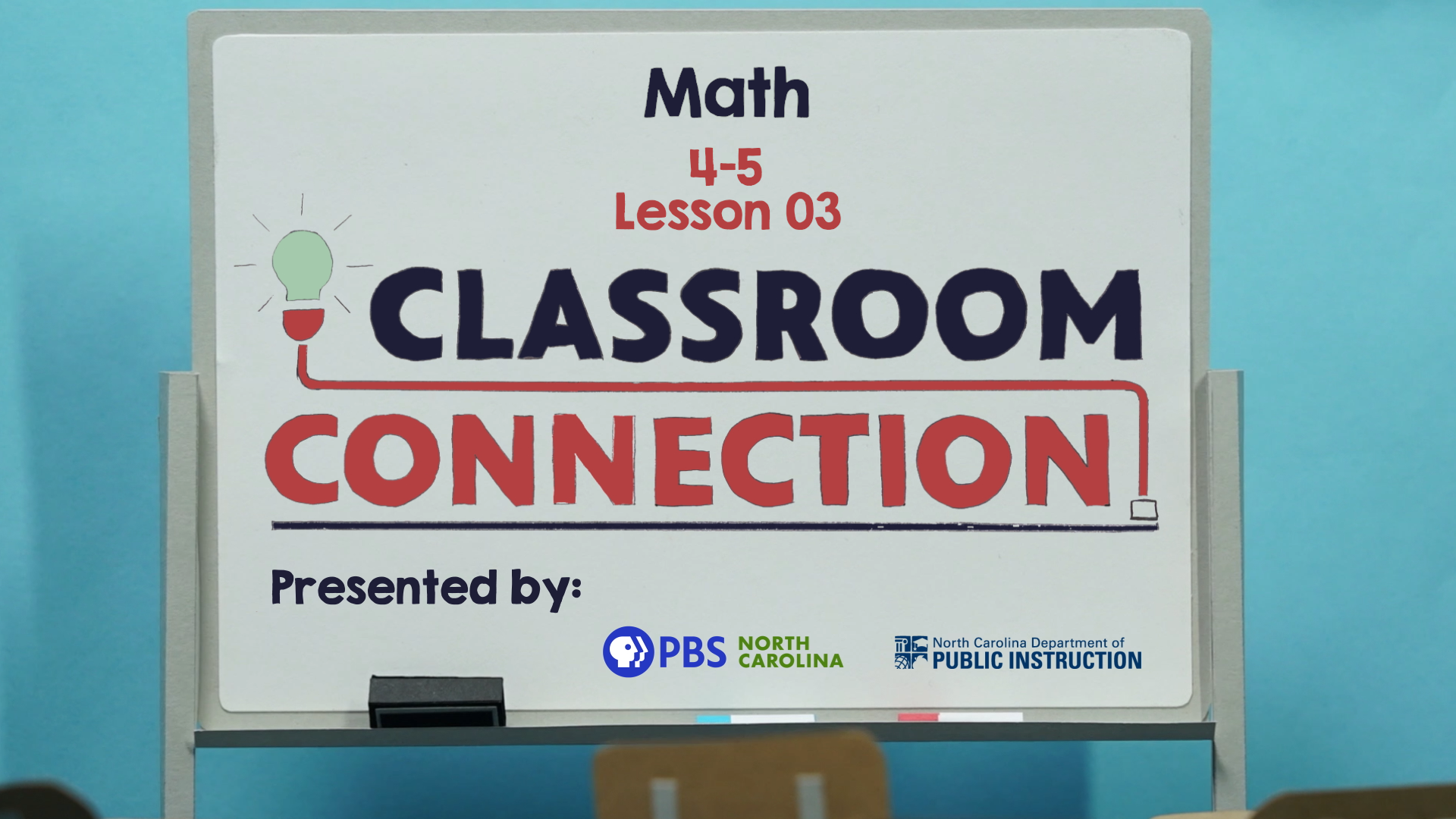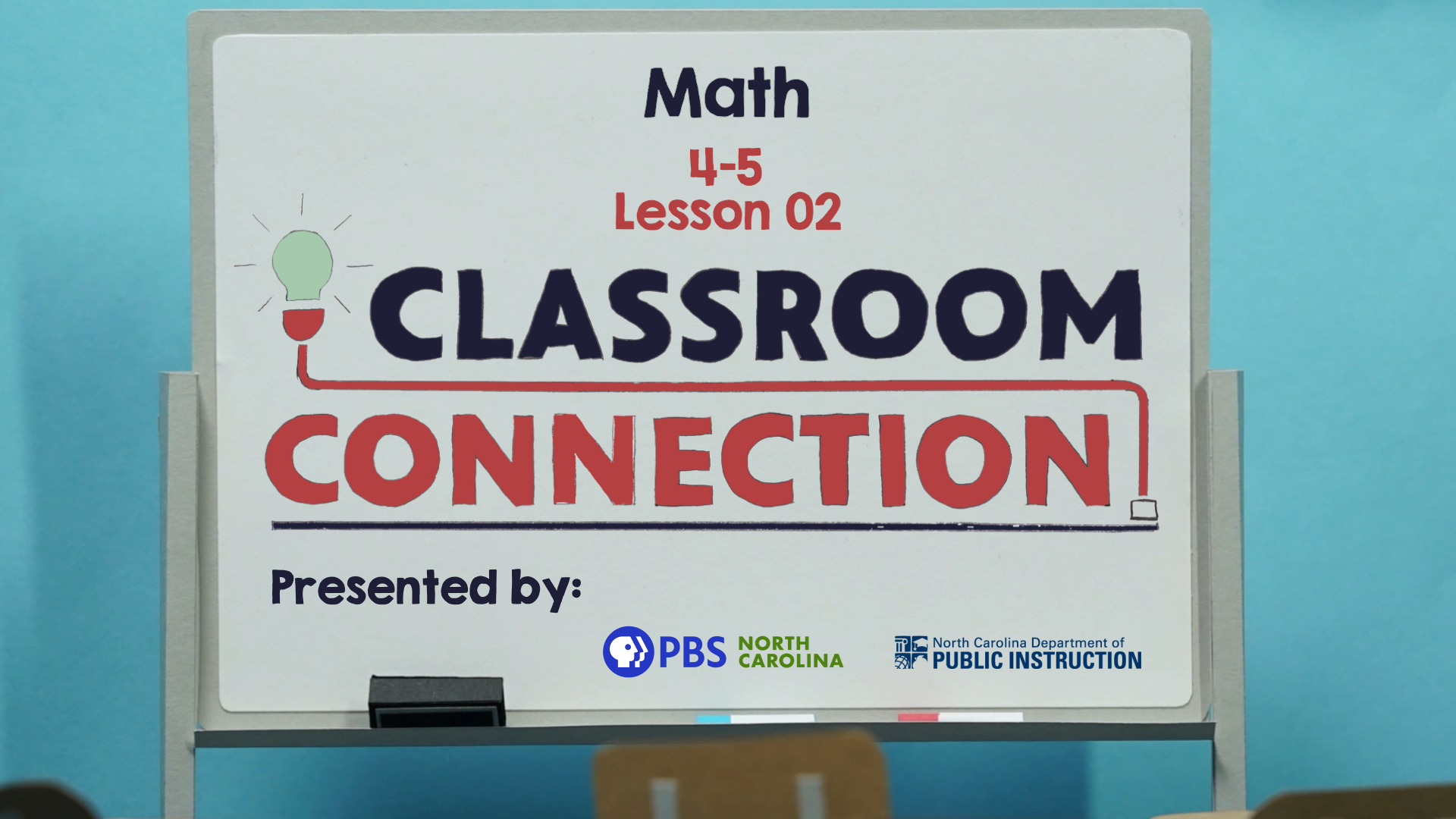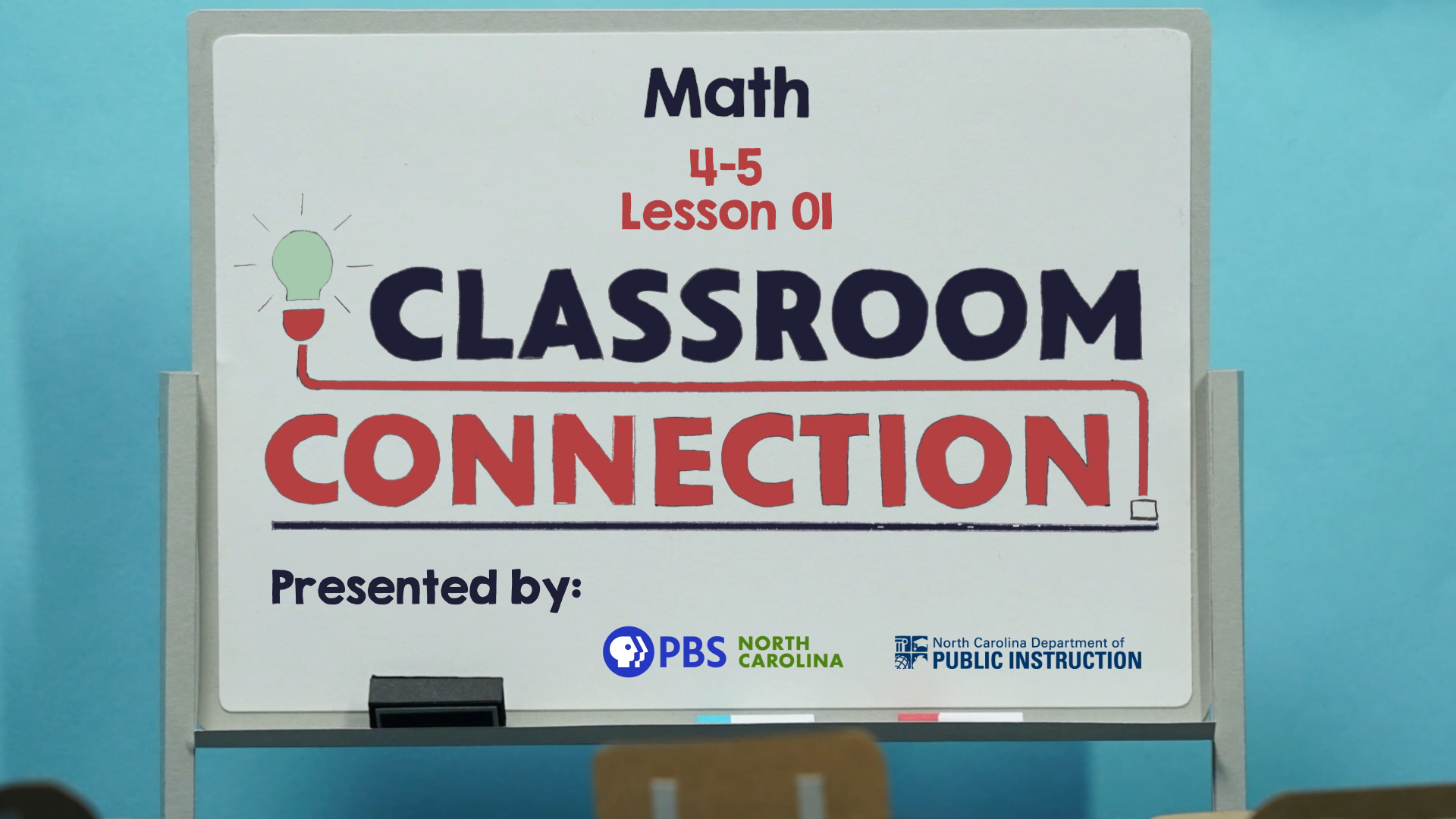Classroom Connection features PBS KIDS favorites alongside North Carolina educators. This short-form learning series will deliver engaging math and literacy lessons developed by and featuring North Carolina teachers, aimed at Pre-K through third grade students to support their at-home learning.
Classroom Connection Math Lessons
Use the number line to place, compare, and order decimals to the hundredths. Use estimation and an algorithm based on place value to add decimals to hundredths. Use the number line to place, compare, order, and add decimals to the hundredths.
Match visual models to the numbers they represent in fraction and decimal format. Solve problems with decimal fractions. Match visual models to the numbers they represent in fraction and decimal format.
Use visual models and equations to solve problems involving multiplying and dividing fractions. Use models & equations to solve problems involving multiplying and dividing fractions.
Use visual models, repeated addition, and multiplication to solve problems with equal sized groups. Compare the strategies to see which one is most efficient. Use visual models, addition, & multiplication to solve problems with equal sized groups.
Use estimation and visual models to solve problems involving adding fractions with unlike denominators. Solve problems involving adding fractions with unlike denominators.
Put together the fraction puzzle pieces by matching the visual model, expression, and fraction representations. Match visual models, expressions, and fractions to explore adding fractions.
Use visual models and benchmark fractions to help compare and order fractions with unlike numerators and denominators. Use a number line and benchmark fractions to compare and order fractions.
Explore comparing fractions with like numerators or like denominators to tell which is larger or smaller using benchmark fractions and visual representations like number lines. Explore comparing fractions with like numerators or like denominators.
Interpret a fraction as division of the numerator by the denominator. Solve word problems involving division of whole numbers leading to answers in the form of fractions or mixed numbers by using visual fraction models or equations to represent the problem. Interpret a fraction as division of the numerator by the denominator and solve problems.
Use visual models to solve problems with division to divide unit fractions by whole numbers and whole numbers by unit fractions. Use visual models to solve problems with division of unit fractions & whole numbers.
Use estimation and visual models to solve problems involving adding fractions with unlike denominators. Use visual models to solve problems involving adding fractions with unlike denominators.
Divide two- and three-digit numbers by a single-digit number using strategies based on place value (partial quotients). Divide multi-digit numbers by a single-digit number using strategies based on place value.
Mr. Lineberger loves playing games with dice. He needs your help to figure out how many each of his friends will get when they come over to play games. We can use division to help him figure it out.
Mr. Lineberger wants to plant a garden. Help him visualize and represent his garden. We can use division to help him plan how he'll use all the veggies he plans to grow.
Explore side length, area, and volume and apply the formulas V = l × w × h and V = B × h for rectangular prisms to solve problems. Explore side length, area, and volume and apply the formulas for volume to solve problems.
Understand concepts of volume measurement by counting unit cubes, using cubic cm, cubic in, cubic ft, and improvised units. Solve problems involving volume. Understand concepts of volume measurement by counting unit cubes or calculating volume.
Use visual models, decompose shapes, and apply the area formula for rectangles to solve problems in real world contexts. Use visual models & the area formula for rectangles to solve problems.
Decompose shapes into rectangles to determine the area of the composite shape using the area formula for rectangles. Decompose shapes into rectangles to determine the area of the composite shape.
Decompose shapes into rectangles to determine the perimeter of the composite shape using the perimeter formula for rectangles. Decompose shapes into rectangles to determine the perimeter of the composite shape.
Use attributes of quadrilaterals (number of sides and type of angles) to sort and classify shapes. Use attributes of quadrilaterals to sort and classify shapes.
Use your body and form several yoga poses to help create, describe, and name different types of triangles. Name their angles. Move into yoga poses to help create, describe, and name different types of triangles.
Move on a physical place value chart to help understand that in a multi-digit whole number, a digit in one place represents ten times what it represents in the place to its right. Move on a physical place value chart to understand the "times 10" pattern.
Recognize that in a multi-digit number, a digit in one place represents 10 times as much as it represents in the place to its right. Hunt for patterns in the number of zeros of the product when multiplying a number by powers of 10. Hunt for patterns in the product when multiplying a number by 10.
Multiply a two-digit by a one-digit whole number using strategies based on place value and the properties of operations. Illustrate and explain the calculation by using equations, rectangular arrays, and/or area models. Multiply whole numbers using place value strategies & the properties of operations.


